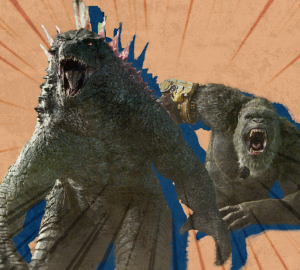‘Fifty Shades’ of awful and unhealthy gender roles
Universal Pictures
A friend of mine recommended the film “Fifty Shades of Grey,” claiming that the movie was better than the book. After seeing the movie and never reading the book, I can only assume that the screenplay was written on toilet paper. E.L James’s famous fan-fiction novel “Fifty Shades of Grey” tells the story of college undergraduate Anastasia Steele who falls for a young, successful business entrepreneur with quite a few whips and ball gags in his closet.
Christian Grey, played by Jamie Dornan on the silver screen, clarifies: “I don’t do romance, my tastes are very … singular.” The plot of the film can basically be described as a porno dressed up with a flimsy romance. However, instead of touching base on the BDSM fetishes the story is famed for, I’d rather focus on the gender roles for men and women this film markets to young adults.
To begin with, I’m pretty sure a doormat has more integrity and self-confidence than Dakota Johnson’s portrayal of Anastasia Steele. For the most part, I could not understand a single line this actress uttered to the point where I decided that her character wasn’t supposed to speak but only make good “O” faces. Johnson’s acting ability in this movie didn’t range further than biting her lip constantly and speaking with a breathy whisper that makes John Mayer sound like a death metal singer.
Upon closer examination of the character of Anastasia Steele, the viewer notices that she is not only uncomfortably meek around Grey, but when she interacts with anyone. With a sought-after degree in English, Steele admits to Grey that she has no real career aspirations after graduation. Later in the movie, Steele agrees to Grey’s dominant/submissive contract detailing, among other things, the diet she must have, the demand that they sleep in separate bedrooms and that there will be no feelings involved. This illustrates Anastasia Steele as a bland role model for women, not just because she is submissive in the bedroom, but in all aspects of her life.
In addition, the character of Christian Grey isn’t all that compelling either. He immediately takes over the relationship, pampering Steele with gifts — a car for her graduation and first-edition copies of “Tess of D’Urbervilles” — and takes her on private jet and helicopter rides. Dornan clearly depicts Grey as an archetypal bachelor who enjoys a good brawl, avoids commitment and must always be in total control, most notably in-between the sheets. This image of the ladies man, man’s man and man about town pigeonholes a cliche viewpoint of what it means to be comfortable with one’s masculinity.
Now I understand that this film, and possibly the book, are not meant to be taken seriously. But the film is trending and presents the false idea that an attractive woman is obedient and an attractive man radiates testosterone. Some could argue that the film might have had a feminist appeal if Anastasia was the dominant partner while Grey was the submissive. This concept is intriguing, but then the entire dynamic of the story would crumble and lose its stigma as ‘girl porn’ because Grey would no longer exude the typical male, macho attitude society dignifies as sexy.
In the last ten minutes of the film, Anastasia finally stands up for herself and realizes that she deserves to be in a meaningful relationship and take charge of her life. The fact that it took her the entire film to reach that conclusion is pathetic and one of the most recycled plot schemes in fiction, therefore the film’s storyline earns an F.


























